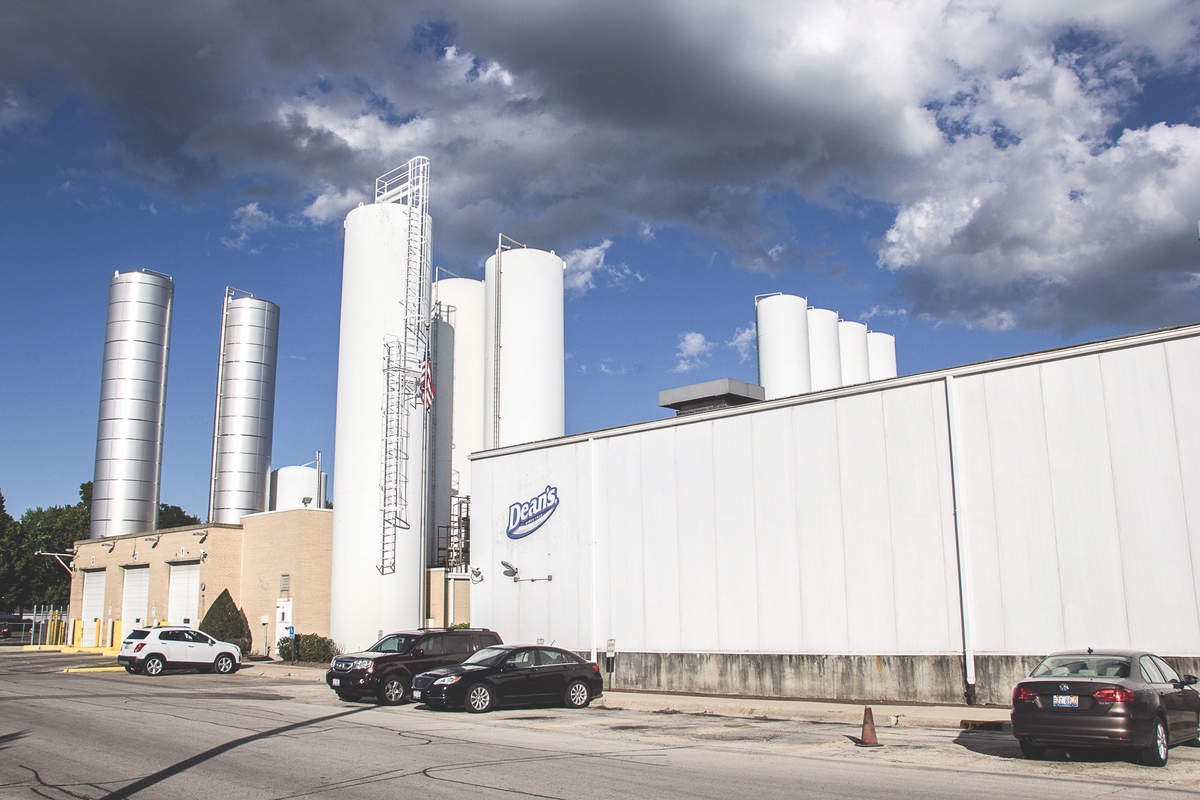HUNTLEY – Huntley became a prosperous town in the 1800s, because of milk. For more than a century, Huntley was known as the dairy capital of Illinois and the Midwest; with hundreds of surrounding dairy farms northwest of Chicago producing raw milk and bringing it to the village for processing.
But now, the milk economy, like so many others, has slowly been changing. The environment is much more competitive, and changes in consumer buying habits in the last 20 years or so were harbingers of the future. But Dean Foods soldiered on, remaining the nation’s second-largest processor of fluid milk behind Nestle in the last decade.
The final blow for Dean and Huntley came in 2016, when WalMart, one of Dean’s largest customers, became a competitor when the retail giant built its own processing plant in Fort Wayne, Indiana. This forced Dean to end contracts with 100 farmers in the Chicago area.

Transportation and production is scheduled to cease at the Dean’s factory by September 30. (Photo by Tony Pratt/Sun Day)
When the firm notified Huntley officials a few weeks ago that it was shutting down its plant by September 30, and putting 130 employees out of work, local officials were probably not surprised.
Dean will start layoffs in mid-September, and transportation and production operations will close by September 30, according to a village official. Huntley Village Manager David Johnson reportedly said that the Dean complex at 11713 Mill St., immediately south of downtown, is the last milk facility left in Huntley. Dean’s product line now includes ice cream, sour cream, yogurt, Dean brand and private label milk, and other dairy items.
Dean’s dairy processing plant and offices, located right along the Union Pacific (formerly Chicago & Northwestern) railroad tracks in the heart of Huntley, opened in 1945. At that time, the plant began processing and bottling raw milk in quart paper cartons and gallon glass jugs. Huntley became a major milk industry site in the middle of the 19th century, chiefly because area farmers located their farms along transportation facilities such as railroad lines and formed towns near their farms.
Village and Dean officials met last week. However, village officials say they still don’t know what plans Dean may have for the transportation, production, and office facilities on its 15-acre site.
“Dean’s is still responsible for maintaining the property, even after it shuts down operations,” according to Charles Nordman, Huntley’s director of development services.
Now, what of the future? The village of Huntley remains one of the fastest-growing communities in the northwest suburban area. The 15-acre Dean site is one block south of the newly revitalized town square area. The village has been talking to area residential developers for several months about the possibility of a new development either in, or in place of, the Catty Building, located immediately north of the Dean property.
Local businessman/developer Mike Skala has suggested the creation of a 17-acre retail-residential development, including a new place for his Goodfella’s Beef business, just a block west at Mill Street and Route 47. This proposal now is being considered by the village’s Plan Commission.
The Dean property’s location along the Union Pacific railroad tracks appears to suggest future commercial or light industrial redevelopment, if and/or when the site is sold.
Setbacks are usually turned into opportunities, especially in Huntley in the last two decades.





1 Comment
This is a great tip especially to those new to the blogosphere. Short but very precise information… Thank you for sharing this one. A must read article!